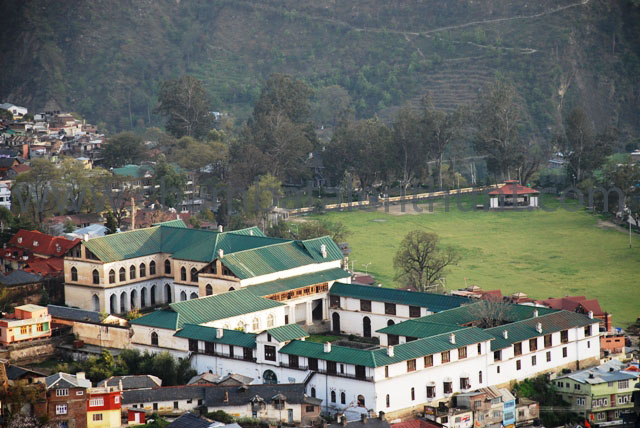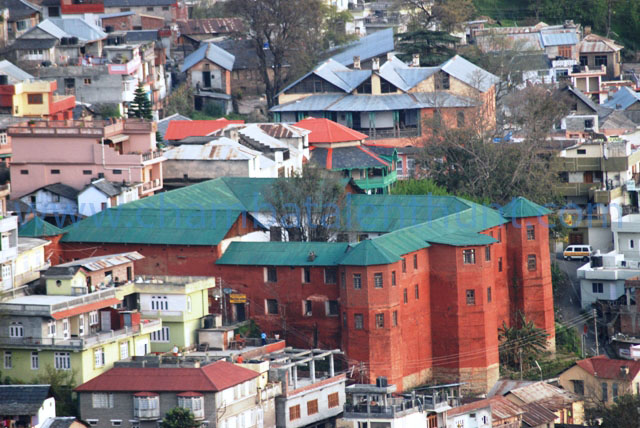- Chambatalenthunt2013@gmail.com
-
 +91-9816631006, +91-9418333592
+91-9816631006, +91-9418333592
Our Heritage Building

Geographically, Chamba is bounded on North-West by Jammu and Kashmir, on the North-East and East by Ladakh area of Jammu and Kashmir state and Lahaul & Bara-Banghal area of Himachal Pradesh, on the South-East and South by the Kangra district of H.P and Pathankot district of Punjab.
Regarding the early history of the region, it is believed that this area was at a time inhabited by certain Kolian tribes, which were later subjugated by the Khasas. The Khasas too after a certain time came under the sway of Audumbaras (2nd century BC). The Audumbaras had republican form of government and worshiped Shiva as their principal deity. From Gupta period (4th century AD) the Chamba region was under the control of Thakurs and Ranas who considered themselves superior to the low tribes of Kolis and Khasas.
In around 500 AD, a legendary hero called Maru, migrated to North-West from Kalpagram (a mythical place from where majority of the Rajput dynasties claim their descent) and founded Brahampura (Bharmour) in the valley of the Budhal river, seventy five kilometer to the east of present Chamba town. His successors continued to rule over the country from that capital city for over three hundred years until Sahil Verman shifted his capital from Brahampura to the more centrally located plateau in the lower Ravi Valley. He named the town after his beloved daughter Champa. His Rani voluntarily offered herself a sacrifice to bring water for the people of this town through rivulet originating from a place called Bharotha. The layout of Chamba seems to be in conformity with the ancient texts. From this period onward, the Rajas of Chamba continued to rule in an uninterrupted and direct line of descent. By the last quarter of 18th century the Sikhs forced the hill states to pay tribute to them. Maharaja Ranjit Singh systematically dethroned the hill princes including the more powerful Kangra ruler Sansar Chand Katoch but spared Chamba in lieu of the services Wazir Nathu of Chamba had rendered him on two occasions. After Ranjit Singh’s death, Chamba became unprotected and was drawn into the vortex of disintegration. Before Raja Verman came on the scene, the Chamba region was divided into bits and pieces, being ruled by petty chieftains who were busy fighting each other. Raja Sahil Verman subjugated the Ranas and chieftains and unified the territory. Raja, therefore for better administration, divided the Chamba into five zones known as Mandlas. These Mandlas were later renamed as Wizarts. This old division of Chamba region continues till today. The Wizarts are now called tehsils. These are Bharmour, Chamba, Bhattiyat, Churah, and Pangi.
In the field of education, the milestone was achieved in 1958 when the College was opened in the heart of town in Akhand Chandi Palace of erstwhile ruling family of Chamba.. The College is perched near the foot of gentle slopping valley overlooking Chawgan – a big rectangular ground and the hub of various activities. It holds a majestic picturesque view in the densely populated Chamba town.

One of the largest monuments, Rang Mahal is located in Surara Mohalla. The foundation of Rang Mahal was laid by Raja Umed Sing (1748-1764). The super structure of Rang Mahal, which is in brick belongs to a later date with its southern portion built around 1860 by Raj Sri Singh. The architecture of Rang Mahal is an amalgam of Mughal and British styles. This palace was the residence for a branch of the ruling family. Its fort like looks justify its use as royal granary and treasury which is on its western side. Once the palace must have hummed with activity of busy servant and the frolics of the royal blood but now under the aegis of Handicrafts Department of the State Government, most of the rooms of this palace are being used as work-shops for making shoes, chapples and rumals. A number of decorative and colorful wall painting have been removed and taken to National Museum of Delhi. Some of the wall paintings and richly painted doors of the palace can be seen preserved in the Bhuri Singh Museum of Chamba.